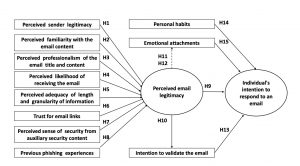Motion presence – a Motorola field study on sharing motion information
Abstract
We present the Motion Presence application, an augmented phone book style application that allows close friends and family to view each other’s current motion status (“moving” or “not moving”) on their mobile phones. We performed a two week long field trial with 10 participants to observe usage and investigate any privacy concerns that might arise. We found that our participants used the motion information to infer location and activity as well as to plan communication, to help in coordinating in-person gettogethers, and to stay connected to patterns in each others’ lives. Participants saw the motion data as mostly confirming their existing thoughts about the locations and activities of others and expressed few privacy concerns. In fact, they frequently asked for more information to be shared to make the application more compelling.
In a blog post Bentley reflects on the meaning of simplicity, which to him “centers on an alignment between the user’s mental model of a system and the actual model running inside the system.” He then expands on the concept of calm technology, introduced twelve years ago by Mark Weiser and John Seely Brown of Xerox PARC.
“They saw a need for people to be aware of their environments, but without being distracted from their primary tasks. Relevant data would be ambiently displayed for people to notice through motion, sound, light, color, etc. Besides the ambient nature of these displays, I think one of the most salient points of this work was that the data being displayed was actually the raw data of bits traversing a network, and not some abstraction or inferred value that might not be as easy to understand. There was no confusion…if the wire was moving, bits were flowing. This simple piece of information could be used by the people in the room to infer whatever they needed at the time…whether it was a good time to print, check email, download a large file, etc.
We used this principle when we created the Motion Presence application. We shared fairly raw context data of if a person was moving between places or stationary at a place (we purposefully did not want to disclose actual locations). We observed that users easily understood the system and were able to use this information to infer activity, availability, location, destination, and time to destination given existing complex social knowledge about others in their close social circle. We could have tried to infer availability from location, time, motion, etc. but we believed that doing so would be confusing and frustrating for users since they would not be able to understand the complex model used to determine availability. And the second it was wrong once (which it certainly would be), users would likely lose faith in the system and not trust it in the future. The motion data was seen to be accurate and users trusted it and thus were able to trust the inferences that they made from it.
The learnings from the Motion Presence application demonstrates the power of people in applying complex social knowledge to inference problems. This is something computers are not very good at, even if they could get all of the raw data, but human brains are wired to deal exactly with these types of situations. In building social systems, let’s try to keep the system simple, and take advantage of the power of people to interpret simple, raw data in a social context.”
– Download article (pdf, 140 kb, 10 pages)
– View presentation (via Slideshare, 29 slides)





[…] read a great paper by Motorola on mobile motion presence, using your mobile phone to keep track of when a friend is stationary or […]
[…] mobile phones. We performed a two week long field trial with 10 participants to observe source: Motion presence a Motorola field study on…, Putting people […]